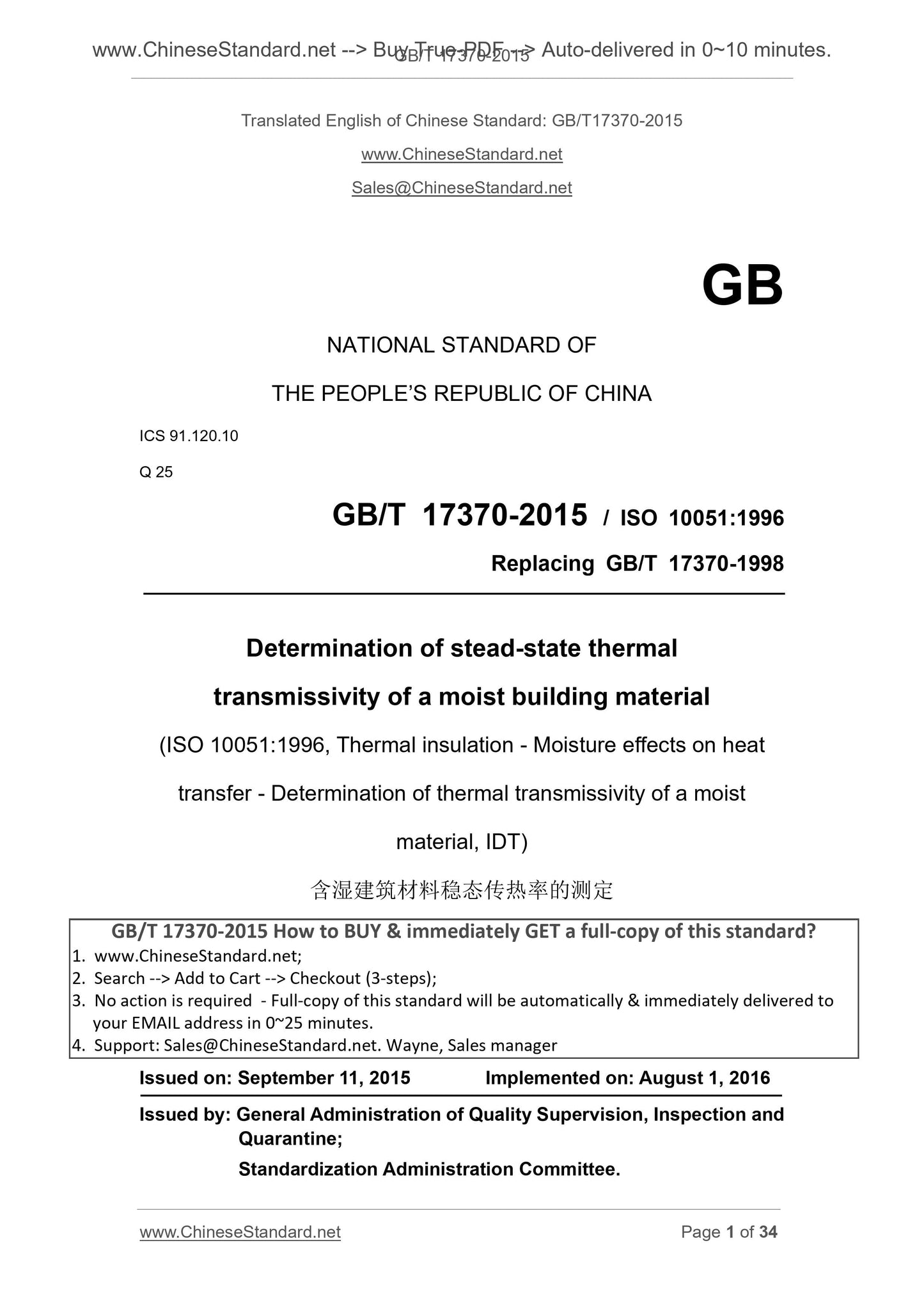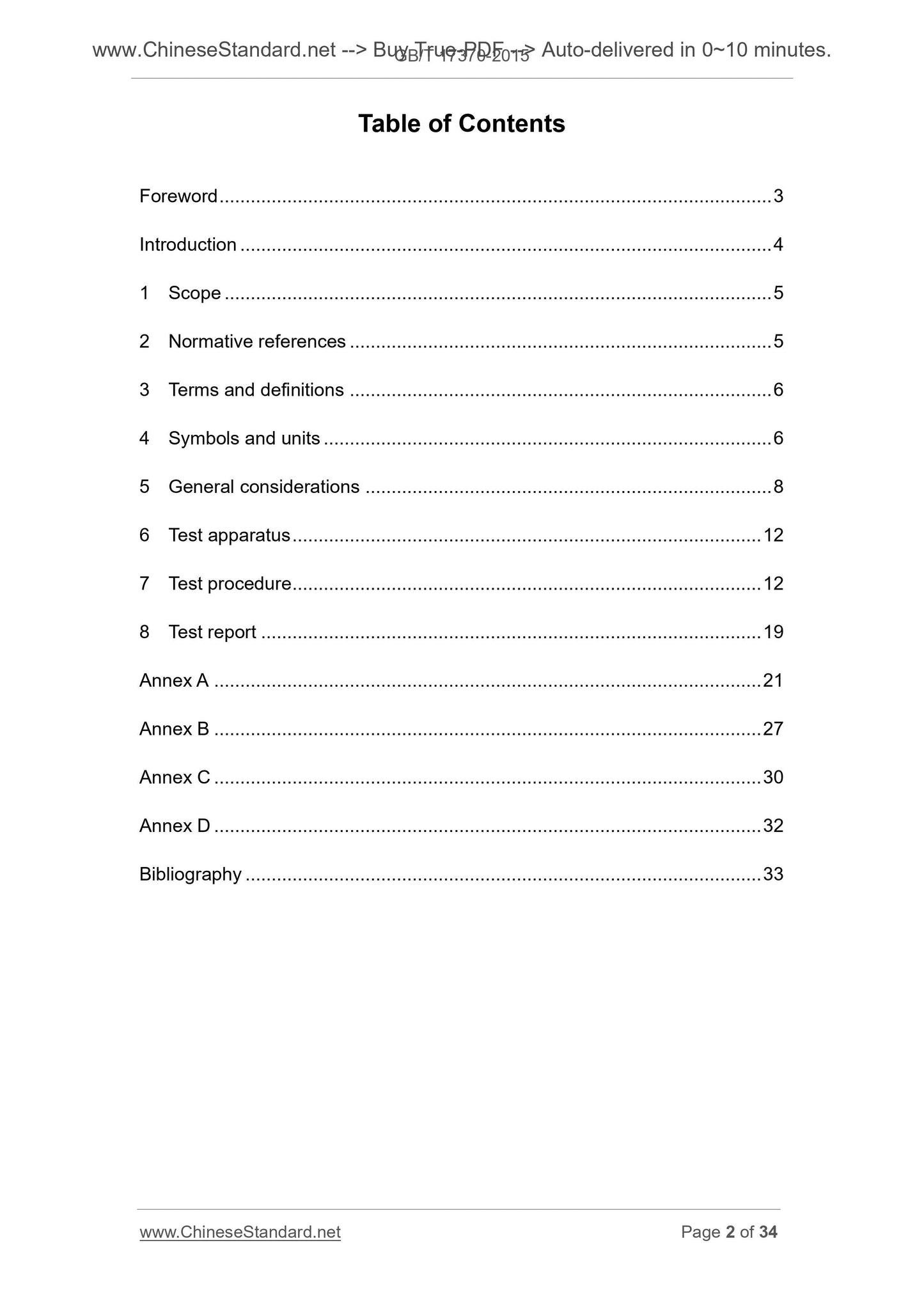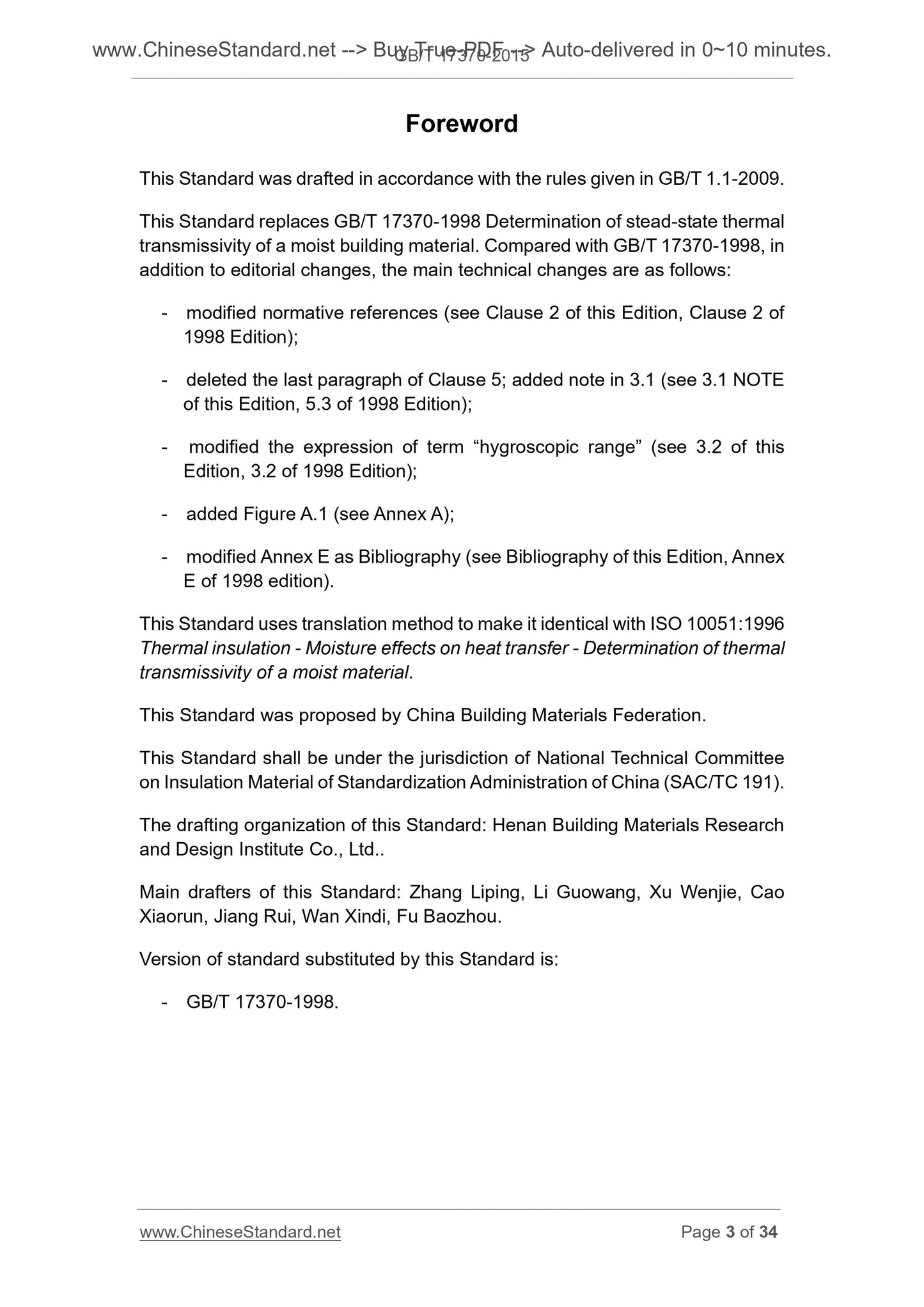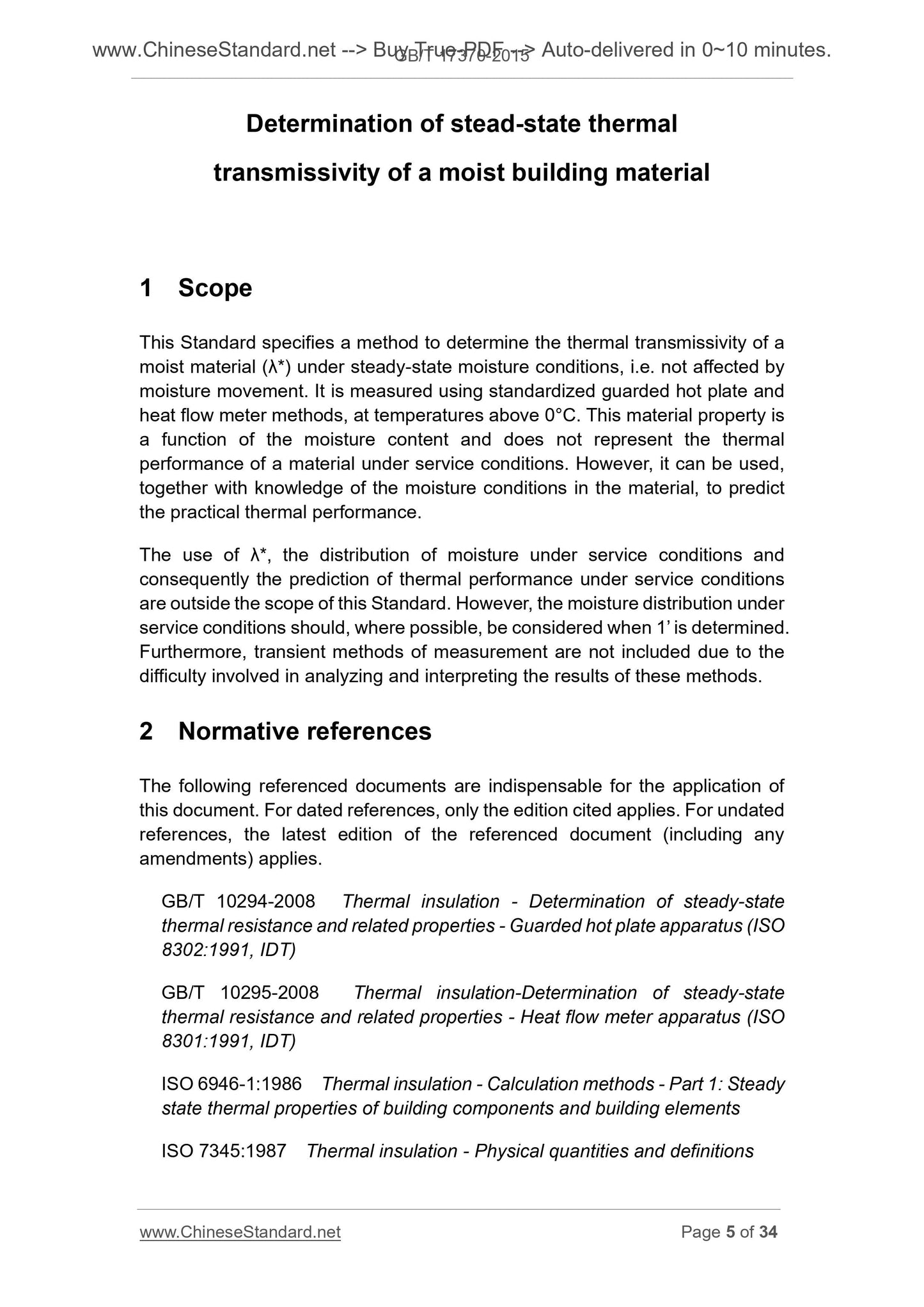1
/
of
4
www.ChineseStandard.us -- Field Test Asia Pte. Ltd.
GB/T 17370-2015 English PDF (GB/T17370-2015)
GB/T 17370-2015 English PDF (GB/T17370-2015)
Regular price
$150.00
Regular price
Sale price
$150.00
Unit price
/
per
Shipping calculated at checkout.
Couldn't load pickup availability
GB/T 17370-2015: Determination of stead-state thermal transmissivity of a moist building material
Delivery: 9 seconds. Download (and Email) true-PDF + Invoice.Get Quotation: Click GB/T 17370-2015 (Self-service in 1-minute)
Newer / historical versions: GB/T 17370-2015
Preview True-PDF
Scope
This Standard specifies a method to determine the thermal transmissivity of amoist material (λ*) under steady-state moisture conditions, i.e. not affected by
moisture movement. It is measured using standardized guarded hot plate and
heat flow meter methods, at temperatures above 0°C. This material property is
a function of the moisture content and does not represent the thermal
performance of a material under service conditions. However, it can be used,
together with knowledge of the moisture conditions in the material, to predict
the practical thermal performance.
The use of λ*, the distribution of moisture under service conditions and
consequently the prediction of thermal performance under service conditions
are outside the scope of this Standard. However, the moisture distribution under
service conditions should, where possible, be considered when 1’ is determined.
Furthermore, transient methods of measurement are not included due to the
difficulty involved in analyzing and interpreting the results of these methods.
Basic Data
| Standard ID | GB/T 17370-2015 (GB/T17370-2015) |
| Description (Translated English) | Determination of stead-state thermal transmissivity of a moist building material |
| Sector / Industry | National Standard (Recommended) |
| Classification of Chinese Standard | Q25 |
| Classification of International Standard | 91.120.10 |
| Word Count Estimation | 23,230 |
| Date of Issue | 2015-09-11 |
| Date of Implementation | 2016-08-01 |
| Older Standard (superseded by this standard) | GB/T 17370-1998 |
| Quoted Standard | GB/T 10294-2008; GB/T 10295-2008; ISO 6946-1-1986; ISO 7345-1987; ISO 9288-1989; ISO 9346-1987; ISO 10456 |
| Adopted Standard | ISO 10051-1996, IDT |
| Regulation (derived from) | National Standard Announcement 2015 No.25 |
| Issuing agency(ies) | General Administration of Quality Supervision, Inspection and Quarantine of the People's Republic of China, Standardization Administration of the People's Republic of China |
| Summary | This Standard specifies the temperature above 0 ��, wet under steady-state conditions (ie not wet migration impact) protection with a hot plate or heat flow meter device for measuring moisture content material heat transfer rate (��) method. Heat transfer rate is a function of the moisture material moisture content, combined with the distribution of information within the material moisture, the actual thermal performance of the material can be estimated. Since the analysis and interpretation of results difficult, this standard does not apply to transient measurements. �� use, moisture distribution under the conditions of use and thermal performance is expected to use state are beyond the scope of this standard. However, if possible, should be considered in determining �� humidity conditions of distribution. |
Share







